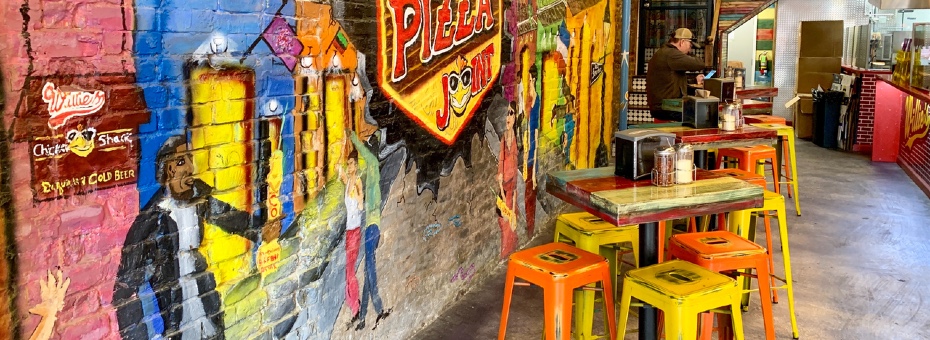In a time where people feel so socially disconnected, the value of hospitality businesses like restaurants is greater than ever. Yet after witnessing such a dramatic disruption to their daily operations, there is a fear that many restaurants – small and large – will never quite recover.
I’ve spent my entire 30-year career in the restaurant industry and never envisioned it all crashing down in a few days. As many of us are experiencing a strange amount of free time, I’ve been reflecting on the dire need for the industry to transform the way it operates. The impact of COVID-19 has proven how ill-prepared we are to deal with crises. It’s time for us to rethink how we operate so that we can create a more sustainable and resilient industry moving forward.
Making Thin Margins a Thing of the Past
Restaurants are notorious for operating on thin margins. We are a workforce of fast thinkers who tend to be reactive in nature and focus on living in the now versus planning for the future. But we can no longer use the way we’ve always worked as an excuse, especially in the face of adversity. Instead, we must challenge the status quo, especially since it impacts 15 million restaurant workers in the United States alone.
I’ve worked with the president at Lean Enterprise Institute, Josh Howell, to identify how restaurants can prepare for future challenges by transforming their operations and expanding their margins. Realistically, we’re entering a period where restaurants need to get back to basics and potentially shift away from appeasing every customer demand. We no longer have the flexibility to be everything to everyone.
Aligning Resources with Demand
Before each shift, the average line cook preps what she or he thinks will be needed for that day. This work is done in batches, hours before orders are placed and the food is consumed. Cooks typically estimate how much they need based on assumptions rather than hard data or facts. While cooks may think they are prepared, they tend to overcompensate, which leads to waste. Or, they undercompensate, causing them to have to abandon their workstation to chase product, utensils, etc., elsewhere. This antiquated “brigade system” operating model that restaurants and their kitchen staff rely on is no longer effective.
Consider Alex, a cook who runs out of an ingredient in the middle of a shift. In typical fashion, Alex leaves her workstation to get more and comes back with twice as much as before. She thinks to herself, “it’s better to be safe than sorry,” as she increases her mise-en-place quantities while her food continues to cook unattended. While Alex is trying to prevent running out, she’s reducing the quality of the food while exacerbating the disconnect between replenishment and consumption. Instead of restocking based on demand and what is truly needed when it’s needed, she’s overcrowding her workstation with stock. Now her workstation is enlarged, adding excess reaching and searching to her job, which creates an ample amount of unneeded motion – and eventually, wasted product.
If we were to leverage historical data and redefine job functions, we could reduce waste, improve quality, adequately scale, create more purposeful work, and better align production to demand.
Imagine if Alex walked in for her shift and her station was fully stocked and prepped, based on data from historical and projected sales. As she continues to cook, a dedicated worker stops by her station to restock small amounts of ingredients and whisk away empty containers. Our cook is now operating in a tidier and more compact workstation, with fresher ingredients and the ability to solely focus on cooking and getting the most flavor out of the ingredients. She experiences a heightened sense of purpose, less frustration, and increased motivation.
This is the value of lean thinking – it distinguishes between creating motion for the sake of motion (which restaurant workers are notorious for) versus creating motion for the sake of value. Applying thoughtful design – from layout to operations – can increase productivity, reduce waste, and heighten employee purpose, effectively widening restaurants’ margins.
Rethinking Scale
Restaurant owners are forced to plan their spaces to include square footage for dry goods, liquor storage, food storage, trash and trash removal, etc. As you can imagine, space that isn’t used for seating guests is not going to generate any revenue. Thus, restaurants must work to reduce the amount of square footage they require overall. This can be done by reducing the idle space they need for storage through increasing the cadence of purveyor deliveries. While this would require a shift in how purveyors currently approach deliveries, the reality is that restaurants and purveyors cannot survive without one another, so they must work together to reshape the current delivery model.
Where the government – and new regulations – play a role
In the past few weeks, the restaurant industry has truly felt like the wild, wild West. Workers have been without pay or any certainty of when their work can resume; they’ve received vague communication from management; and are unclear on how the government will help. And unlike most corporations, restaurant owners are without a business continuity plan that helps shape how they can keep their businesses afloat and their employees well – both from a physical and financial standpoint – during a time of crises.
It’s become clear that increased regulation and support are needed from the government at both a federal and state level. Policymakers must consider how they can help the industry become more sustainable and its workers more secure.
For starters, the following must be addressed:
- How can restaurants pay their portion of property taxes without any taxable transactions?
- How can restaurants rely on business-interruption insurance if it doesn’t cover global disasters?
- Why are landlords able to demand restaurants sign a triple-net lease (versus a single-net lease), requiring us to pay property, insurance, and maintenance taxes? Restaurants are consistently included in the category of businesses that produce at least a 30% margin – when the average restaurant operates on less than a 10% margin. (As a quick example, if a restaurant buys 10 swordfish and doesn’t sell just one, it only breaks even).
While I’m not exactly sure what the answer is, we need to start asking questions and speaking with public policy members to help find solutions. It’s clear that the federal and state government will need to play a role in helping the industry and its people secure a more sustainable future.
During this quarantine, I empathize with all restaurant workers who are facing unprecedented times with no clear vision of what the future entails. But I hope we can use this as an exceptionally hard learning experience – and emerge stronger and more resilient than ever.
Please leave a comment below to share your experience and any ideas you have for creating a brighter industry for the future.





